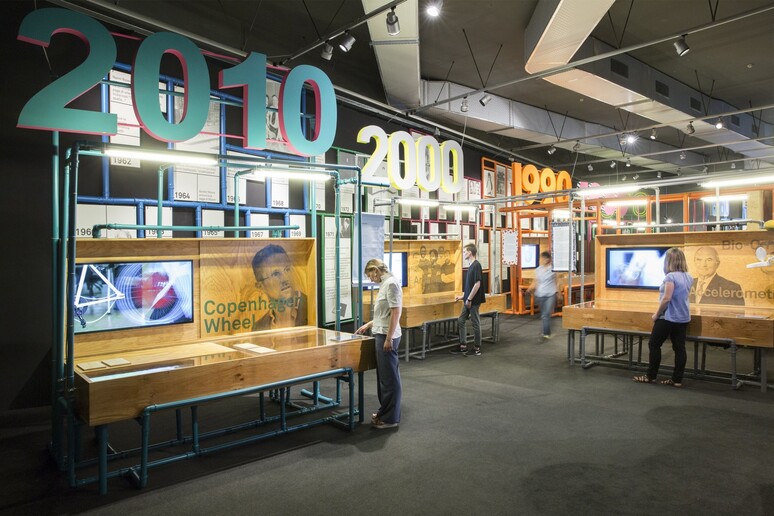The world's first desktop personal
computer, the world's first microchip, the accelerometer in most
peoples' smartphones... all these elements have something in
common which probably very few people are aware of: they were
invented by Italians.
While much media attention is paid to "made in Italy"
fashion and food, perhaps too little is given to the country's
incredible history of innovation.
A new exhibit, "Make in Italy - The Exhibition", aims to
start correcting this imbalance.
The exhibition - which is being hosted simultaneously at
Milan's National Museum of Science and Technology and at the TIM
space at the Expo 2015 grounds in Rho - tells a history, through
the objects on display, of the leading Italian-made innovations
and innovators of the past 50 years.
Computer buffs will learn that the Olivetti Programma 101
was the first desktop computer in the world. According to a
commercial from the times, the machine - presented at the end of
New York's world fair, in October 1965 - "is so simple and
efficient that a secretary can learn to use it in a few days."
While it might not have impressed Mac inventor Steve Jobs,
the core concepts are those found in desktop PCs today and
apparently the American public at the time - still used to
closet-sized "mini computers" which only the most skilled
technicians could master - was wide-eyed with amazement.
"For the first time, there was the word 'personal' before
'computer'," said GastoneGarziera, one of the two inventors of
the machine - on stage with other co-developer, Giovanni De
Sandre - to wide applause at the presentation of the exhibition
Monday at the museum.
Exhibit curator Riccardo Luna said the exhibit was about
"50 years of Italian inventions that at times we forget are
Italian, aside from fashion and food."
The exhibit is sponsored by Telecom Italia, whose president
Giuseppe Recchisaid: "We are famous around the world for our
engineering skills."
Telecom is a natural partner for the exhibit, he said, for
it has always driven innovation. "We are the first in Europe and
the fifth in the world in terms of mobile telecommunications
technology development," Recchi said.
Other giants of Italy's technological prowess present at
the exhibition presentation Monday included Federico Faggin. "My
first invention was the silicon gate, which allowed the creation
of the microprocessor," he said, adding: "I was 28 years old."
Faggin recalled how innovation isn't just about the
science. "At times it takes courage to break with past
traditions. Innovating requires courage inside us and the
strength to convince others," he said to wide applause.
"Many times true innovation comes not inside big companies,
but from small ones. Also, vision is very important," Faggin
said, adding that at first glance Intel co-founder Gordon Moore
and Andy Grove were not convinced that his invention - which led
to the creation of the Intel 4004 processor - was all that
important.
The processor is viewable under a magnifying lens in on of
the exhibit showcases.
"Behind technologies are the people who imagined them. This
is the common theme of this exhibit," Luna said.
Other Italian inventions given pride of place at the
exhibit include Olivetti's ET 101 (the world's first,
mass-produced electronic typewriter) and M 24 personal computer
(based on Intel 8086 microprocessor and Microsoft's MS-DOS
operating system).
Italian innovation prowess isn't only limited to computer
technology.
The exhibit - organized around decades and starting with
the 1960s - also displayed other "made in Italy" jewels of
ingenuity like Technogym's Unica gym exercise machine, car maker
FIAT's Common Rail engine (used in most car diesel engines
around the world) and Bio On's "clean" plastic, which dissolves
in water - with no harmful effects - in ten days.
The plastic, invented by ex-graphic designer Marco Astorri,
is produced using bacteria and sugar production waste materials.
Its first commercial application was the Miss Sissi lamp for
Italian design icon Flos.
On a truly Italian note, the exhibition concludes with the
ISSpresso espresso coffee machine, which on May 3 this year was
put to the test for the first time in orbit by Italian astronaut
Samantha Cristoforetti on the International Space Station.
ALL RIGHTS RESERVED © Copyright ANSA











